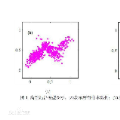In this work, we propose variations of a Gaussian mixture model (GMM) based channel estimator that was recently proven to be asymptotically optimal in the minimum mean square error (MMSE) sense. We account for the need of low computational complexity in the online estimation and low cost for training and storage in practical applications. To this end, we discuss modifications of the underlying expectation-maximization (EM) algorithm, which is needed to fit the parameters of the GMM, to allow for structurally constrained covariances. Further, we investigate splitting the 2D time and frequency estimation problem in wideband systems into cascaded 1D estimations with the help of the GMM. The proposed cascaded GMM approach drastically reduces the complexity and memory requirements. We observe that due to the training on realistic channel data, the proposed GMM estimators seem to inherently perform a trade-off between saving complexity/parameters and estimation performance. We compare these low-complexity approaches to a practical and low cost method that relies on the power delay profile (PDP) and the Doppler spectrum (DS). We argue that, with the training on scenario-specific data from the environment, these practical baselines are outperformed by far with equal estimation complexity.
翻译:在这项工作中,我们提出了基于高斯混合模型(GMM)(GMM)的频道估计值的变式,这些变式最近被证明在最小平均平方差(MMSE)的意义上是初步最佳的。我们考虑到在线估算的计算复杂性低,培训和实际应用的储存成本低。为此,我们讨论修改基本的预期-最大化算法,这是符合GMM参数所必需的,以便允许结构上受限制的共差。此外,我们调查宽带系统中的2D时间和频率估计问题,在GMM的帮助下,将2D时间和频率的估算问题分为1D级的估算值。拟议的累进式GMM方法极大地降低了复杂性和记忆要求。我们注意到,由于对现实的频道数据进行了培训,拟议的GMM估计值似乎在节省复杂性/参数和估计性能之间有着内在的权衡。我们把这些低兼容度方法与一种实际和低成本的方法相比较,该方法依赖于电力延迟剖面图和多普勒频谱(DSDS) 。我们论证的是,从这些具体环境中得出了相同的模型。



